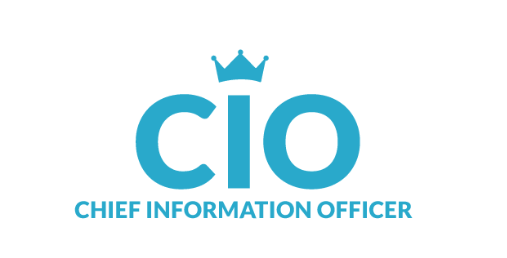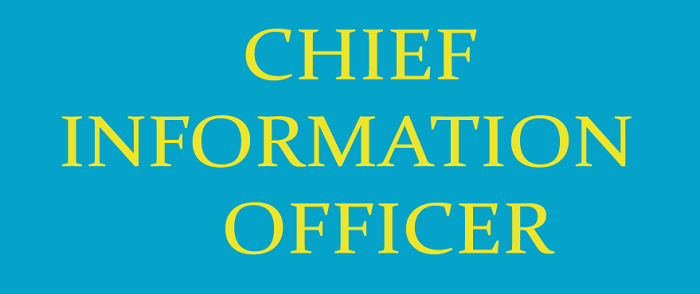What is the Full Form of CIOCIO: Chief Information OfficerA Chief Information Officer (CIO) is the business executive in charge of the information innovation (IT) approach and implementation. 
In addition to overseeing the equipment, software, and data that support various members of the C-suite in carrying out their duties, the CIO should investigate emerging technologies, plan how innovation might bring value to the organization, and manage the risks associated with sophisticated information. In many firms, the CIO reports directly to the CEO; in some, the CIO sits on the leader board. What Does a CIO Do?The CIO manages and transforms IT. Regardless of how much they wish to spend less time in the IT office on daily cycles, several CIOs must keep an eye on the server farm to ensure frameworks and administrations are ready and know innovation tendencies. 
When anything specialized goes wrong towards the end of the week, the CIO will likely get the call, regardless of whether another individual is ultimately responsible for resolving the issue. While the rest of the company debates the relevance of game-changing technological change, most CIOs understand that they will be judged above all else on their ability to perform the basics well. A fantastic e-business model will fail if the CIO fails to provide network security or business consistency, for example. As a C-level executive, the CIO is responsible for developing the IT process and ensuring that it is compatible with the larger business approach. In many mature firms, IT methodology will be the primary driver of the business process. This means that the CIO must be able to understand the larger business requirements and choose which to focus on utilizing technology. Another significant task for the CIO is to build and maintain a convincing and persuading group. In terms of change, most merchants believe CIOs are focused on driving cutting-edge innovation. While IT pioneers pay close attention to marketed breakthroughs, for example, simulated intelligence, VR, and IoT, the majority are still striving to capitalize on enhancements that are only now reaching a tipping point, distributed computing, and massive data examination. As a result, while society discusses the need to shock or be disturbed, most CIOs still concentrate on setting the stage for technological transformation. Why is the CIO Important?Toward the beginning of the twenty-first century, innovation became increasingly embedded in how associations work, how substances execute, and how individuals go about their daily lives, with the web and powerful flexible registering devices making IT a fundamental piece of the overwhelming majority's life. 
Simultaneously, individuals have become increasingly demanding of their technology and the organizations with whom they connect. They expect both to provide simple-to-use and appealing experiences that help them improve faster and for less money. This expectation has put pressure on organizations of all kinds - from corporate aspects to charities, government organizations to clinical suppliers - to employ innovation to meet those standards. Businesses that fail to do so risk being disrupted by newcomers, while organizations that fall short risk losing a share of the broader industry to competitors and being shut down completely. With the stakes so high, the CIO role with its emphasis on the most competent way to use innovation to stay competitive has become critical for an organization's long-term growth. In its 2019 CIO review, Award Thornton and the Innovation Company The CEOs Board announced: "This profession is becoming more fundamental as innovation becomes increasingly ingrained in all aspects of business and customers' life. CIOs who can effectively [become a trusted business partner] will take a seat at the table to drive growth and company development through computerized disruption." Responsibilities of the CIO?The CIO is responsible for, and hence liable for, the essential conveyance demands that fall under the innovation division. Thus, in addition to adding to the association's overall IT system, the CIO's obligations include the following:
Key Leadership Skills for CIOsWhile CIOs used to establish their careers on their technical credentials, today's finest CIOs stand out for other qualities, like communication, creating bridges among groups, and sympathy - all of which are extremely important in times of major societal upheaval. You may call them "Delicate Talents," yet every CIO will tell you they are the most difficult to learn. (See also: Farewell delicate abilities, hello core abilities: Why IT must rename this fundamental talent.) "Great IT organizations monitor change," Red Cap CIO Mike Kelly has said. The best ones drive change. As the pace of change quickens nowadays - and when innovation is in many ways an organization's most valuable resource - associations are seeking more initiative from their IT departments than at any other time in recent memory. "As their groups become more extensive and cooperative, pioneers should shift their approaches and strategies to accommodate the energy that this latest craze of work creates," Kelly argues. "They must finalize their ways to pull various gatherings into a discourse and ensure everybody feels appreciated. Furthermore, they must enhance their abilities to connect the job of their groups to the characteristics, goals, and aims of their organization - to ensure that everyone in the division understands that they are necessary for a solution that may be larger than themselves and their singular self-images. Requirements for CIOsTo succeed in this position, CIOs must possess many hard and sensitive skills. CIOs must understand how to run a corporation since the job necessitates extensive knowledge of how an organization operates from beginning to end. 
CIOs should also be aware of emerging technology trends since IT may evolve in the next years. This employee must build relationships with other high-level executives and field partners. A CIO should understand how each division of an organization strives to determine the specific requirements of each portion of the company, and this individual should be successful at correspondence. The ability to grasp technical words in ways that non-IT people can understand is critical. Skills Needed for This RoleA CIO needs unique skills to navigate through ever-changing orders to maintain a functional workplace. The following are some of the more common skills that might be useful: 
Next TopicFull Forms List
|
 For Videos Join Our Youtube Channel: Join Now
For Videos Join Our Youtube Channel: Join Now
Feedback
- Send your Feedback to [email protected]
Help Others, Please Share










